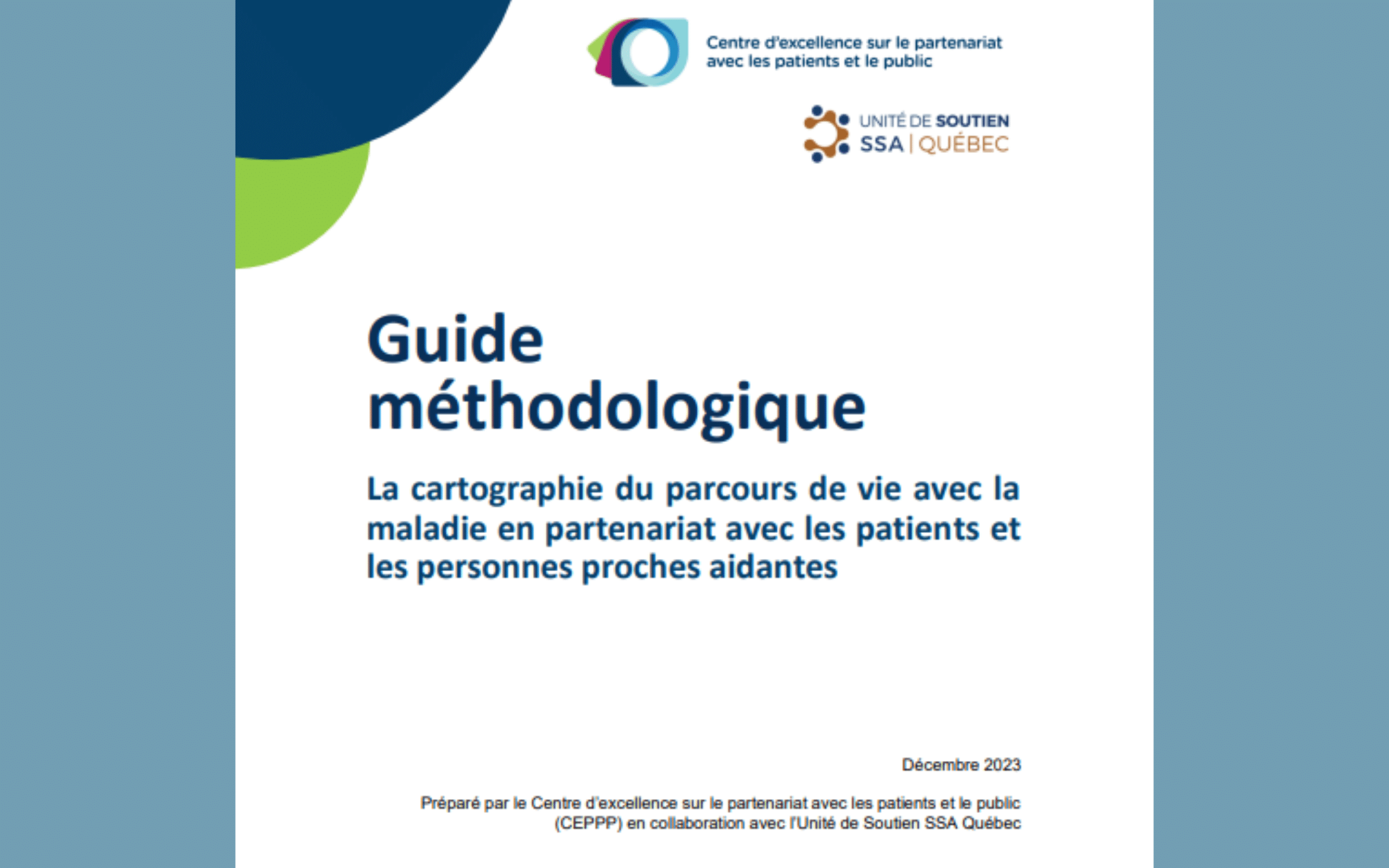This methodological guide (36 pages, in French) is both a reference tool and a practical aid for teams as regards co-building maps of the illness experience with patients, caregivers and the general public. It was created by the Centre of Excellence for Partnerships with Patients and the Public (CEPPP) and the Unité de Soutien SSA Québec.
The guide presents two complementary approaches to mapping the lived experience of chronic illness in partnership with patients and caregivers — namely, the life-course-with-illness approach, and care and service trajectories. The document is divided into four sections:
- Definitions of the concepts used to build a shared understanding of the experience of living with illness and of patient and caregiver experiences.
- Mapping the care and service trajectories and the experience of living with illness
- Methodology (two co-design methods)
- Additional tools and resources


